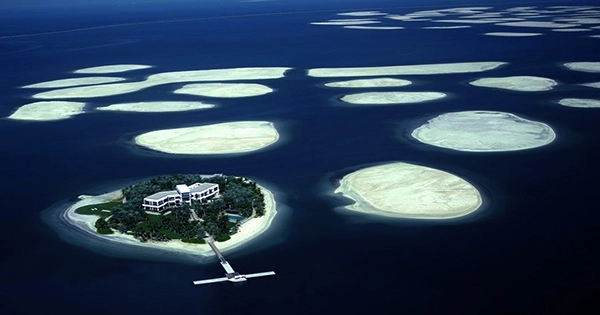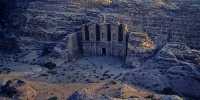Using Google Earth, eagle-eyed internet users claim to have discovered a UFO floating on the ocean floor just a short flying saucer ride away from Peru’s Nazca Lines. “This disk at the bottom of the ocean is 100 percent proof of ancient aliens and the technology is just resting there on the bottom of the ocean,” according to Scott C. Waring of UFO Sightings Daily. You may find a link to the feature’s location on Google Earth here.
The circular feature, which measures around 7 kilometers (over 4 miles) in diameter, is located off the coast of Peru near the Nazca Lines, which are vast pre-Columbian geoglyphs carved into the rocky coastal desert hills of the Palpa Valley (and, contrary to popular belief, were not created by aliens).
This isn’t a UFO or the ruins of a long-lost city, as you’ve probably surmised. In fact, it’s unlikely that it’s even a physical trait. Unusual patterns on the bottom may be observed on Google Earth, according to Live Science, but it’s only a digital artifact left behind from the way data is acquired, processed, and mixed with other data sets.
To put it another way, the shapes and patterns you see on the bottom in Google Earth aren’t a true representation of the seafloor. But, hey, don’t let that stop you from scouring Google Earth for hours on end in search of any strange formations on the bottom.
With the new update to the Google Earth ocean bottom data, it interesting looking at some of the patterns we can observe and why they exist. Some of the patterns have been misinterpreted for an extraterrestrial base or Atlantis in the past. The majority of the unusual patterns, on the other hand, are simply a result of the way the data is acquired, processed, and integrated with other data sets. We can observe a lot of streaks and swirls in the area near Hawaii. This is the output of an algorithm that was used to interpolate the sea bottom depth between data points, and it does not reflect how the seafloor actually looks. There is no depth data for most of the centre section of the image where the streaks can be seen in the above screenshot.
We can frequently spot tracks (1) of better resolution data when zoomed out, which are the tracks of ships equipped with sonar that scanned the ocean floor along their voyage. They have focused on mapping the joints between tectonic plates (2), which are of special importance to oceanographers and geologists in several situations. The traces also reveal the ships’ travel itineraries. The paths stretch out from the southern tip of Tasmania in the above figure, as this is the route that any ships arriving from the east of Australia would follow. Similar patterns may be found in Hawaii, the west coast of the United States, Cape Town, South Africa, and a number of other places.
There appears to be a popular site in southern Chile, but the trails diminish as they reach the shore, so we were unable to locate it. The Panama Canal was also used by several ships. In this post, the tracks are emphasized in a visual that we looked at on Monday. Because greater resolution data is available for shallower coastal seas, the ships’ tracks are significantly less evident near the beaches. The Scripps map, which is based on satellite gravity readings, is the worldwide low-resolution dataset used for the ocean bottom.
Although the map depicts the large-scale structure of the ocean floor, it lacks details, and any specific measurement may deviate significantly from the Scripps image. In the overall picture, a single measurement will frequently seem like a hill or dimple, when it is actually an ordinary spot on the ocean bottom. We can see an area where a survey was done with depth measurements recorded at relatively regular intervals in the above picture from a place near Guam. When those observations are combined with another lower resolution dataset with a different average depth, each measurement appears as a dip or hump.















